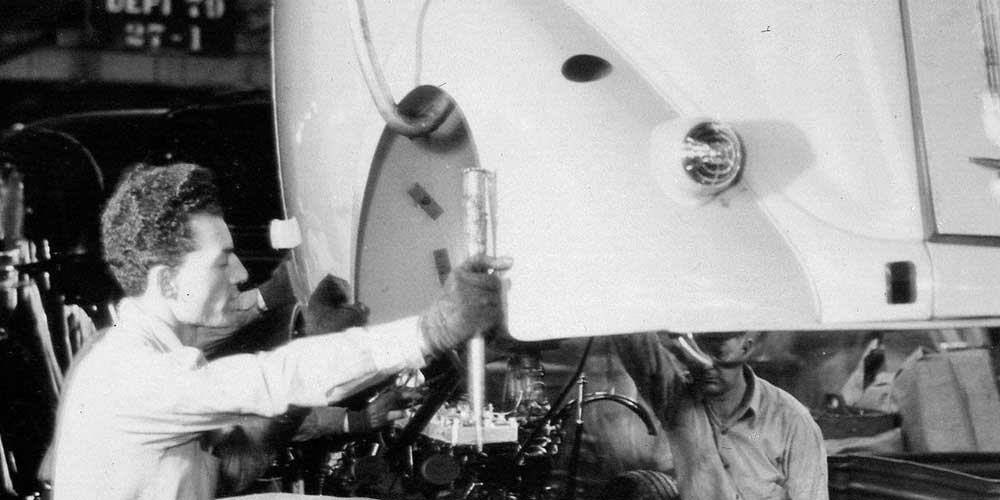By Robert Tate, Automotive Historian and Researcher
Images courtesy of Robert Tate's collection
Posted: 05.23.2016
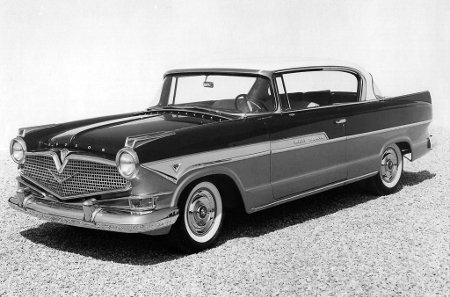
The year 1957 was the last year that Hudson models would receive the Hudson name plate.
For many years, some automotive historians and enthusiasts have said that the 1957 Hudson models were on the top of the list as being one of the most unattractive automobiles ever manufactured in automotive history. Others, however, will argue that the 1957 Hudson models were some the best looking designs on the road.
The Hudson Motor Car Co. had existed for over 40 years. Unfortunately during the latter part of the 1950s a steep downturn in the domestic auto market was something that Hudson couldn’t survive.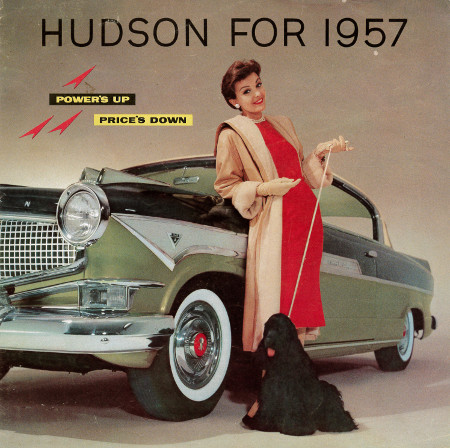
In 1957 after Hudson had merged with Nash-Kelvinator to form American Motors (AMC), Rambler was declared a separate and distinct make of car entirely clear of Nash and Hudson name plates. The loss of loyalty buyers for Hudson and Nash models perhaps gave more positive support to American Motors and its newly designed 1958 line of Rambler automobiles which did well with the motoring public.
The late Roy Chapin once said, “AMC's decision to stop Hudson and Nash was only common sense. We ran Hudson and Nash Metropolitans and Ramblers, it was a charade. They were basically the exact same automobiles and the decision really was one saying we've got to spend our money and our effort and our concentration on the Rambler because we haven't got the dough to update the big Nash's and the big Hudsons.”
The termination of Hudson and Nash was not announced until the September introduction of the 1958 model line by the American Motors Corporation.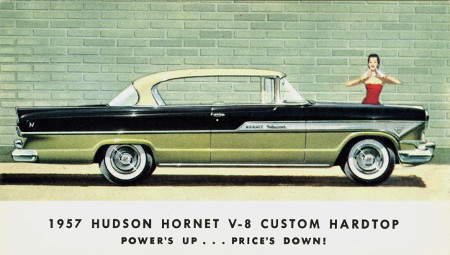
This story is about an automobile that most people either have forgotten about or rarely talk about nowadays – the 1957 Hudson models. The Hornet V-8 series was available in a super and custom four-door sedan and a two-door Hollywood hardtop. The new Hornet 255-horsepower V-8 engine was designed and developed by American Motors engineers, the V-8 engine was also equipped with a four-barrel carburetor and dual exhausts as standard equipment which most consumers had thoroughly enjoyed. The engine was manufactured on a new engine line at the American Motors plant in Kenosha, Wisconsin.
For the 1957 Hudson models, AMC offered a wide selection of new and unique exterior colors such as Avocado, Mardi Gras Red and Sierra Peach. There were 15 solid colors along with 12 two-tone and five three-tone color combinations available which caused some consternation among within the consumer market.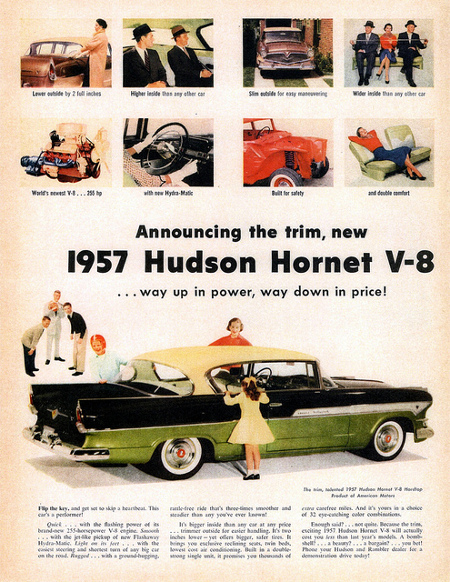
For the interiors, entirely new upholstery and trim selections were available on both Hornet models. Cloth, along with vinyl and metallic fabric combinations were offered, as well as an optional leather trim on custom models. The 1957 Hudson models offered improved airliner reclining seats and twin-bed combination for the passengers, and were available as standard fare on all custom models and optional equipment on super models as well.
All new tri-tone interiors were color keyed to match the exterior colors of the customer’s choice. Padded instrument panels were available as standard equipment on both super and custom Hornet models along with padded sun visors. Another feature that was popular on Hudson models were the all season air conditioning system which was offered as optional equipment on super models.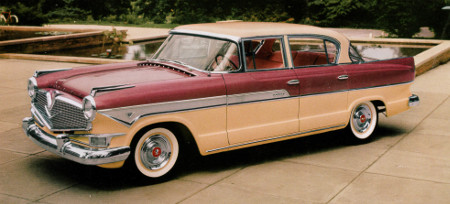
Other features included dual-fin front fender ornaments which completed the flowing lines of the car's design features which most consumers had totally disagreed with. A new silver textured aluminum panel on all custom models had extended from the front fenders into the front door panels on both sides of the car. The aluminum panel did not tarnish or rust.
The 1957 Hudson styling models, had offered the consumers a massive V-shaped die-cast grille which was highlighted by a V-type emblem in the center however some say it was just too gaudy. The 1957 Hudson Hornet V8 Custom 4-door sedan sold for $2,940 plus the cost of its two-tone paint job. The Hornet V-8 Custom Hollywood hardtop model with its 3-tone color schemes sold for $3,030 dollars.
In conclusion, the 1957 Hudson models were highlighted with many styling refinements including a double safe single unit car construction along with a weather eye heating and ventilating system. However, that was not enough to produced great sales for the company and many consumers also felt that the 1957 Hudson models offered too much ornamentation.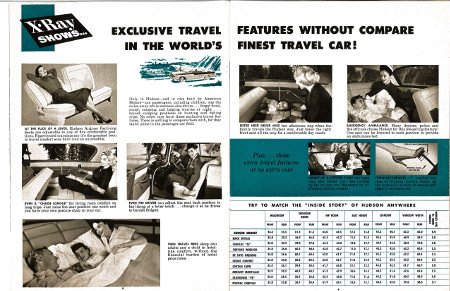
A special thanks to Robert Tate, Automotive Historian and Researcher, for contributing this story to the MotorCities Story of the Week Program.
For further information on photos please visit http://www.detroitpubliclibrary.org/ or email This email address is being protected from spambots. You need JavaScript enabled to view it. Please do not republish the story and/or photographs without permission of MotorCities National Heritage Area. (Bibliography: McCall M .P. Walter. “80 Years of Cadillac La Salle” Crestline Publishing Co 1988; Holls Dave & Lamm Michael. “A Century of Automotive Style 100 years of American car design”. Lamm-Morada publishing 1996-1997; Kimes Rae Beverly & Jr. Clark Austin Henry. “Standard Catalog of American cars 1805-1942”. Krause publication 1987.)


